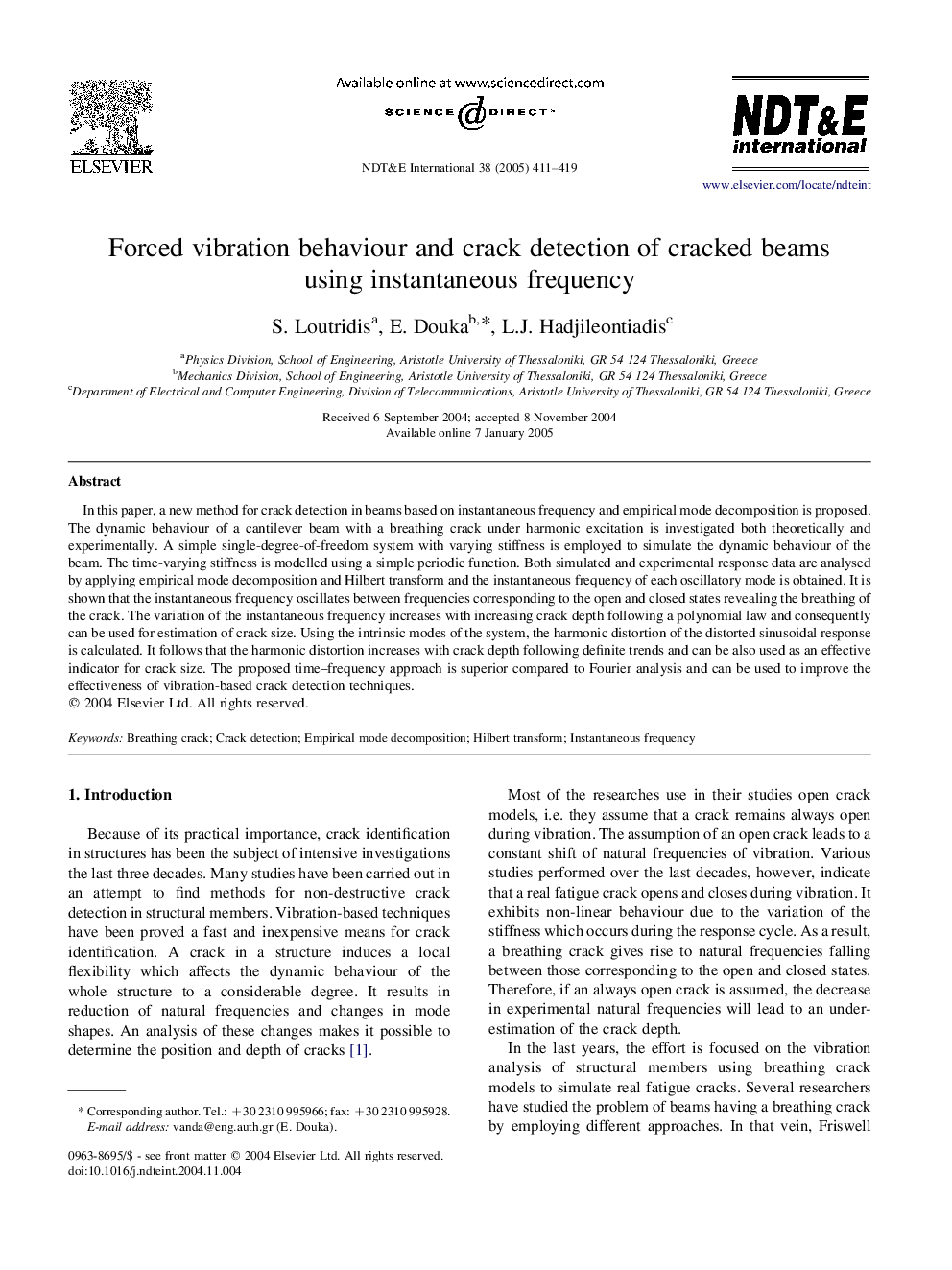| Article ID | Journal | Published Year | Pages | File Type |
|---|---|---|---|---|
| 10292918 | NDT & E International | 2005 | 9 Pages |
Abstract
In this paper, a new method for crack detection in beams based on instantaneous frequency and empirical mode decomposition is proposed. The dynamic behaviour of a cantilever beam with a breathing crack under harmonic excitation is investigated both theoretically and experimentally. A simple single-degree-of-freedom system with varying stiffness is employed to simulate the dynamic behaviour of the beam. The time-varying stiffness is modelled using a simple periodic function. Both simulated and experimental response data are analysed by applying empirical mode decomposition and Hilbert transform and the instantaneous frequency of each oscillatory mode is obtained. It is shown that the instantaneous frequency oscillates between frequencies corresponding to the open and closed states revealing the breathing of the crack. The variation of the instantaneous frequency increases with increasing crack depth following a polynomial law and consequently can be used for estimation of crack size. Using the intrinsic modes of the system, the harmonic distortion of the distorted sinusoidal response is calculated. It follows that the harmonic distortion increases with crack depth following definite trends and can be also used as an effective indicator for crack size. The proposed time-frequency approach is superior compared to Fourier analysis and can be used to improve the effectiveness of vibration-based crack detection techniques.
Keywords
Related Topics
Physical Sciences and Engineering
Engineering
Civil and Structural Engineering
Authors
S. Loutridis, E. Douka, L.J. Hadjileontiadis,
